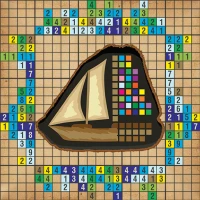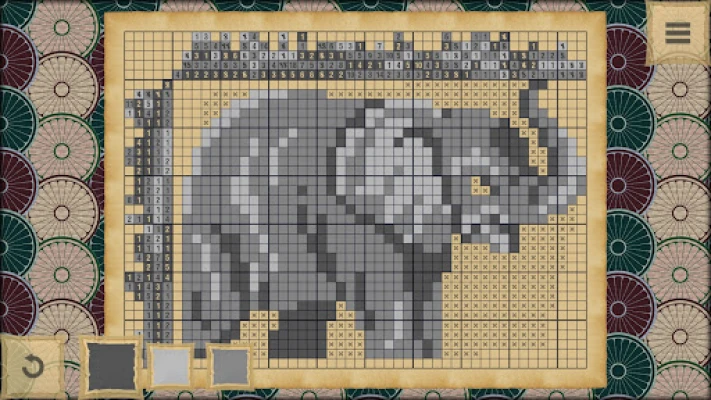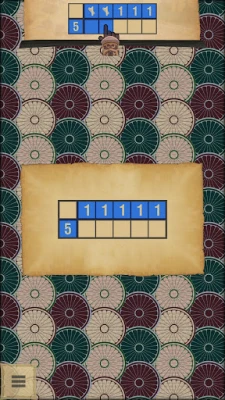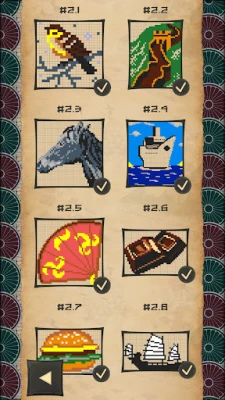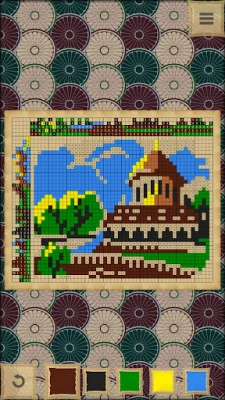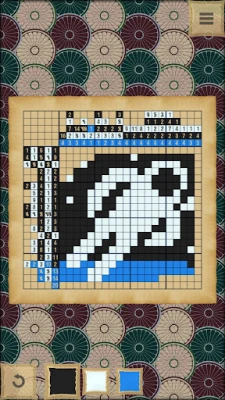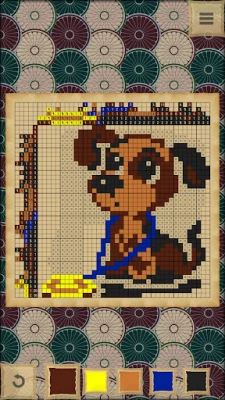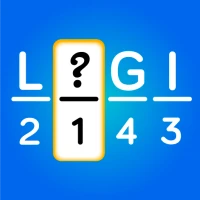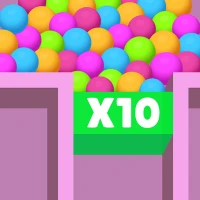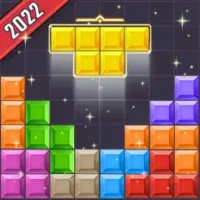
Latest Version
2.9.16
May 01, 2025
Mobile Dynamix
Games
Android
0
$4.99
com.mobiledynamix.crossmecolor.premium
Report a Problem
More About CrossMe Color Premium Nonogram
Unlock the Fun of Nonograms: The Ultimate Guide to Picross Puzzles
Discover the captivating world of nonograms, also known as Picross, Griddlers, Hanjie, or Japanese crosswords. These intriguing puzzles challenge your logic and creativity, allowing you to unveil hidden images by filling in cells based on numerical clues. Whether you're a seasoned puzzler or a curious beginner, this guide will explore everything you need to know about nonograms, from their history to their benefits and how to play.
A Treasure Trove of Puzzles
With over 3,000 unique nonograms available, you can immerse yourself in a diverse range of themes. From adorable animals and vibrant plants to iconic buildings and delicious foods, there's a puzzle for everyone. Whether you’re interested in sports, music, or professions, the variety ensures that you’ll never run out of challenges.
Choose Your Challenge: Different Sizes Available
Nonograms come in various sizes to suit your skill level and time availability. You can start with small grids of 10x10 for a quick brain teaser, progress to the more standard 20x20 puzzles, or tackle the larger and more complex 90x90 grids. This flexibility allows you to choose the perfect puzzle for any occasion.
The Perfect Time Killer
Nonograms serve as an excellent way to pass the time, especially in waiting rooms or during commutes. Their engaging nature keeps your mind occupied, making them a fantastic alternative to scrolling through your phone. Dive into a puzzle and watch the minutes fly by!
More Fun Than Sudoku
If you enjoy Sudoku, you’ll love nonograms! While Sudoku focuses on numbers, nonograms combine logic with creativity, allowing you to reveal beautiful images as you solve. This unique twist makes nonograms a more visually rewarding experience, providing a sense of accomplishment as you complete each puzzle.
A Mental Workout for All Ages
Engaging with nonograms is not just entertaining; it’s also a fantastic way to exercise your brain. These puzzles enhance critical thinking, improve problem-solving skills, and boost memory. They are suitable for all ages, making them a perfect family activity that promotes cognitive development.
Beautifully Designed for an Intuitive Experience
The user interface of nonogram games is designed to be both intuitive and visually appealing. The clean layout and vibrant colors enhance your puzzle-solving experience, making it easy to focus on the task at hand. Enjoy the satisfaction of completing a puzzle in a beautifully crafted environment.
Endless Entertainment with Unlimited Puzzles
With an unlimited number of random nonograms available, boredom is a thing of the past. Each puzzle presents a new challenge, ensuring that you can play for hours without repeating the same experience. The variety keeps your mind engaged and eager for the next puzzle.
Relaxing Gameplay with No Time Limits
One of the best features of nonograms is the absence of time limits. You can take your time to think through each clue and enjoy the process of solving. This relaxed approach makes nonograms a perfect way to unwind after a long day.
Play Anytime, Anywhere – No WiFi Required!
Nonograms are incredibly convenient as they can be played offline. Whether you’re on a long flight, in a remote area, or simply want to disconnect from the internet, you can enjoy these puzzles without any connectivity issues. Just download your favorite nonogram app and start solving!
The Fascinating History of Nonograms
Nonograms, or pic-a-pix, first appeared in Japanese puzzle magazines in the late 1980s. Non Ishida introduced the concept in 1988 with "Window Art Puzzles." The term "Nonograms" was coined by James Dalgety in the UK in 1990, and soon after, The Sunday Telegraph began publishing them weekly, popularizing the puzzles outside Japan.
Understanding the Mechanics of Nonograms
In Japanese nonograms, the numbers serve as clues that indicate how many unbroken lines of filled squares exist in each row or column. For instance, a clue of "4 8 3" signifies that there are groups of four, eight, and three filled squares, separated by at least one blank square. Solving these puzzles requires logical deduction to determine which squares to fill and which to leave empty.
While traditional nonograms are often black and white, they can also be colored. In colored puzzles, the number clues correspond to specific colors, adding an extra layer of complexity. For example, a black four followed by a red two could indicate four black squares, some empty spaces, and two red squares, or it could mean four black squares directly followed by two red ones.
The Evolution of Nonograms
By 1995, nonograms had made their way into handheld electronic toys in Japan, branded as Picross – Picture Crossword. This innovation brought nonograms to a broader audience, allowing fans to enjoy these puzzles in a new format.
Conclusion: Dive into the World of Nonograms
Nonograms offer a unique blend of logic, creativity, and relaxation, making them an ideal pastime for puzzle enthusiasts of all ages. With thousands of puzzles available in various sizes and themes, you can enjoy endless hours of entertainment. So grab your pencil or download a nonogram app, and start uncovering the hidden images today!
Rate the App
User Reviews
Popular Apps










Editor's Choice










